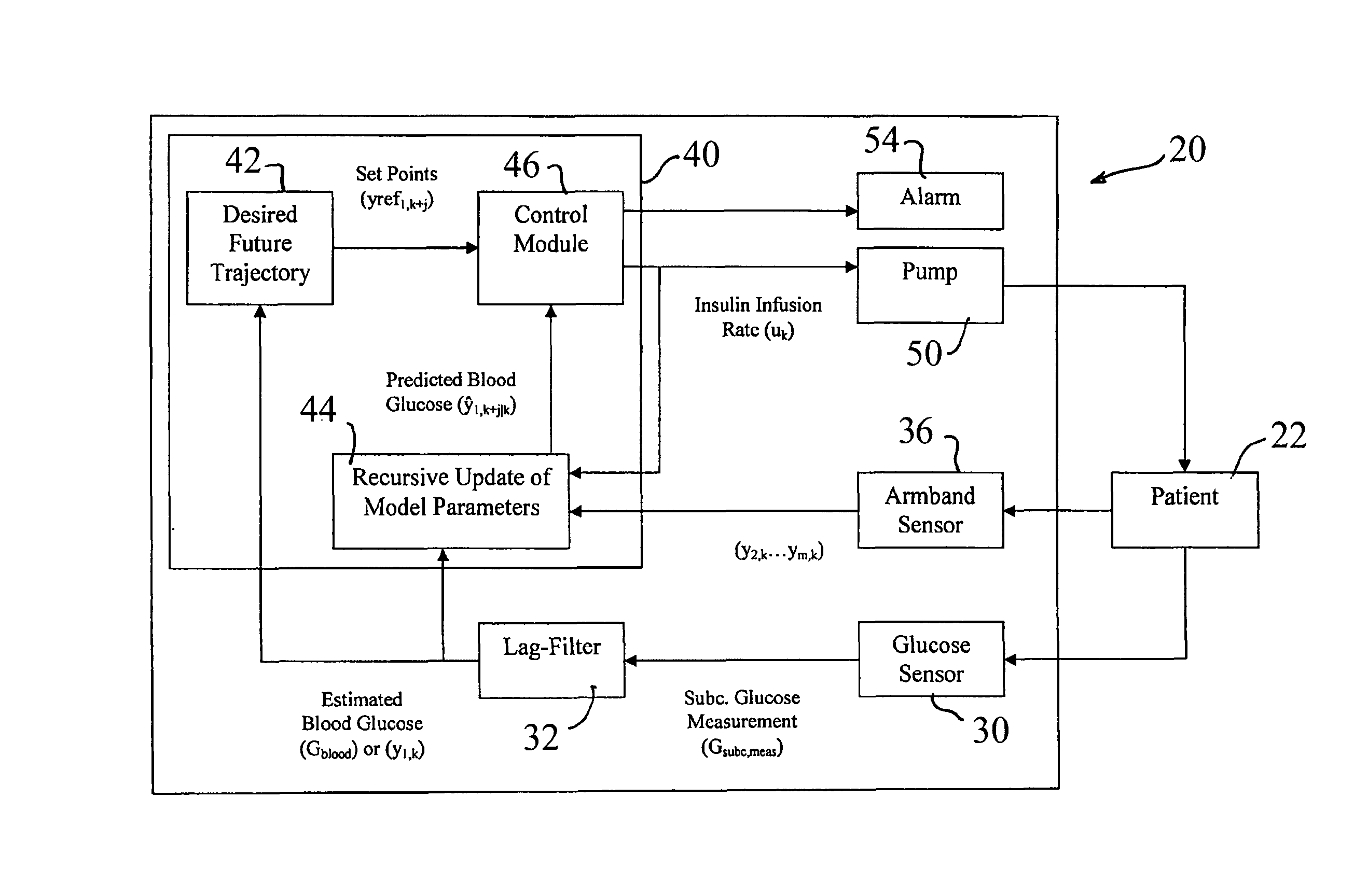Automatic insulin pumps using recursive multivariable models and adaptive control algorithms
a multivariable model and automatic technology, applied in the field of insulin pumps, can solve problems such as large system delays, and achieve the effects of avoiding hypoglycemia episodes, reducing prediction errors, and more time to take precautionary measures
- Summary
- Abstract
- Description
- Claims
- Application Information
AI Technical Summary
Benefits of technology
Problems solved by technology
Method used
Image
Examples
examples
[0070]Tight control of glucose levels is important for the management of diabetes. Large swings in glucose can be detrimental to the patient, increasing diabetic complications such as retinopathy, neuropathy, and nephropathy. It is difficult for people with diabetes to predict their future glucose values in order to adjust the necessary amount of insulin or their eating habits, since the glucose-insulin system is very complex. This invention provides subject-specific empirical models that model the dynamics of glucose in the blood and predict future glucose levels. Models can be used for hypo- / hyperglycemic alarms and eventually an artificial pancreas. For this example, twenty-one days of data from a CGM device and SENSEWEAR armband from one subject with type 2 diabetes were used to develop and validate various orders of autoregressive models with exogenous inputs (ARX). The parameters for the model were identified non-recursively as well as recursively. The accuracy of the model pr...
PUM
 Login to View More
Login to View More Abstract
Description
Claims
Application Information
 Login to View More
Login to View More - R&D
- Intellectual Property
- Life Sciences
- Materials
- Tech Scout
- Unparalleled Data Quality
- Higher Quality Content
- 60% Fewer Hallucinations
Browse by: Latest US Patents, China's latest patents, Technical Efficacy Thesaurus, Application Domain, Technology Topic, Popular Technical Reports.
© 2025 PatSnap. All rights reserved.Legal|Privacy policy|Modern Slavery Act Transparency Statement|Sitemap|About US| Contact US: help@patsnap.com



